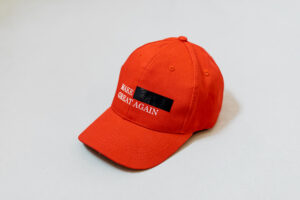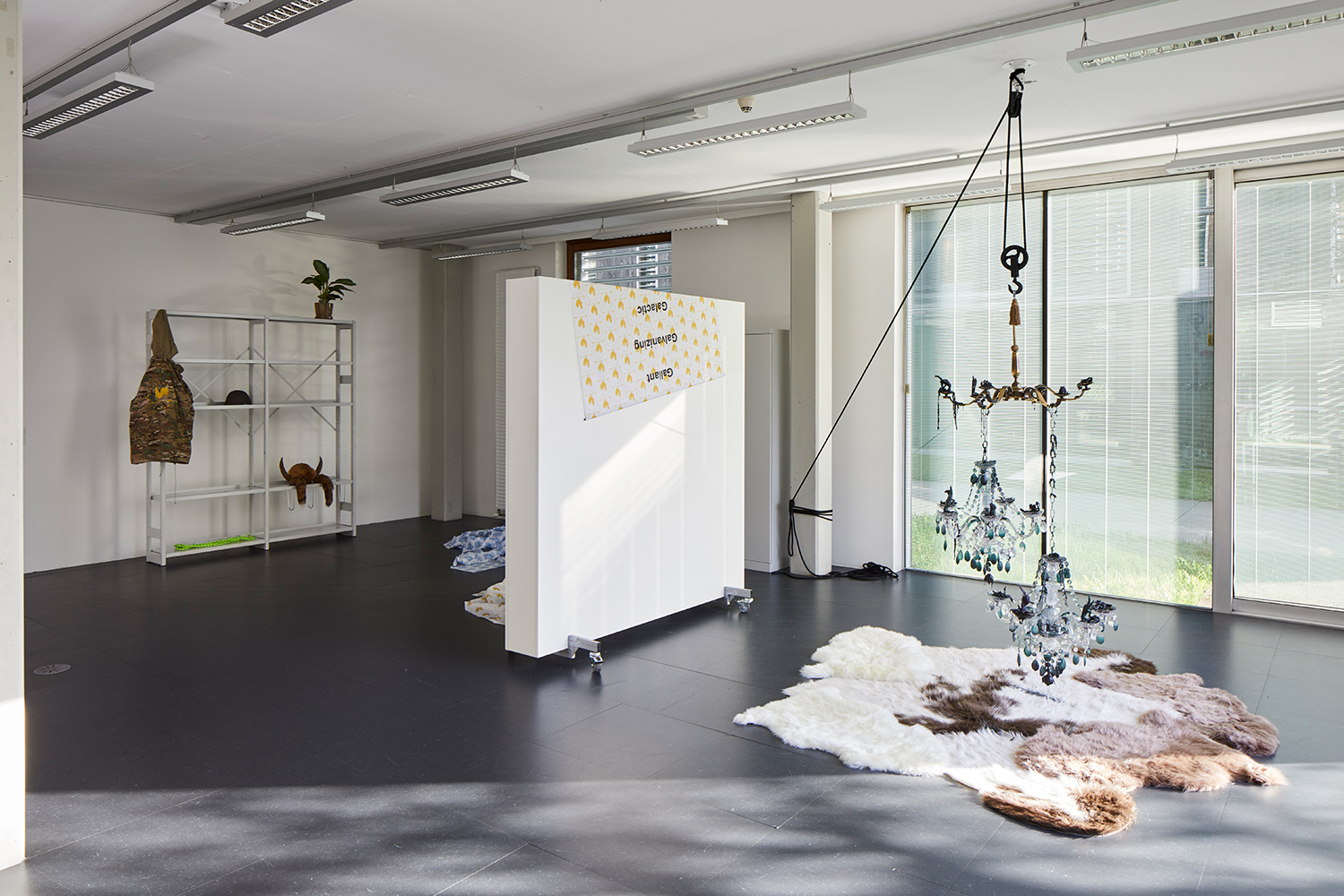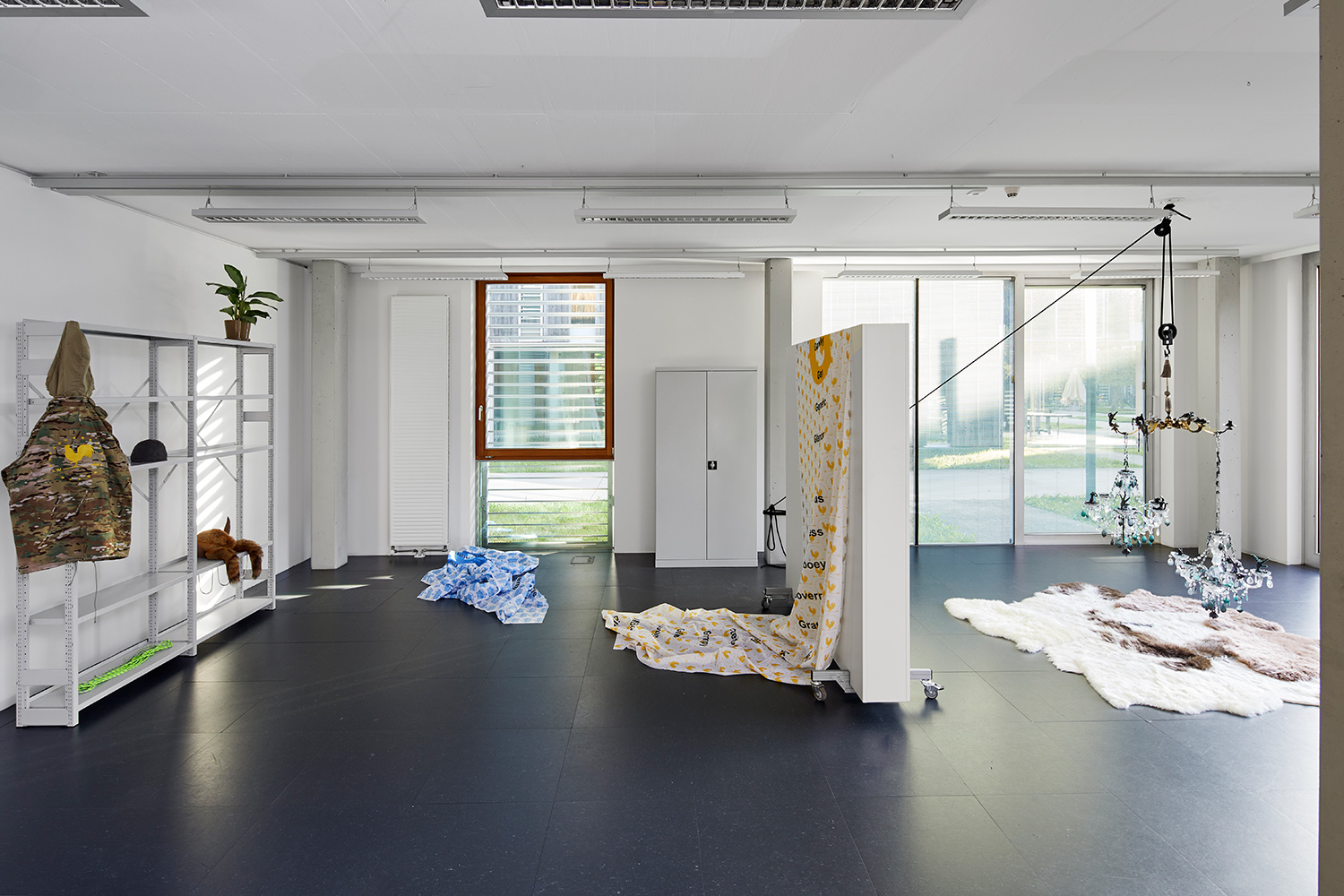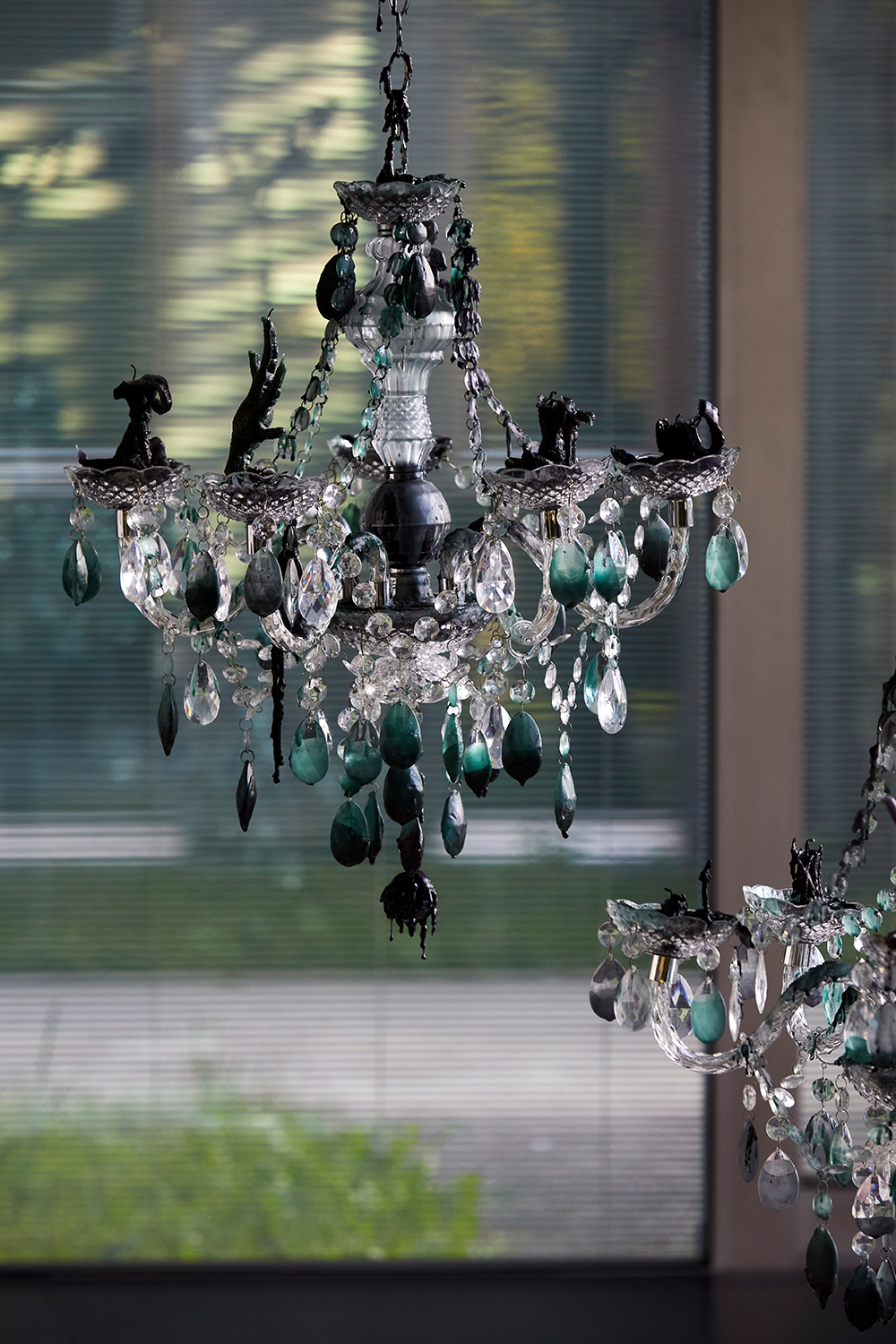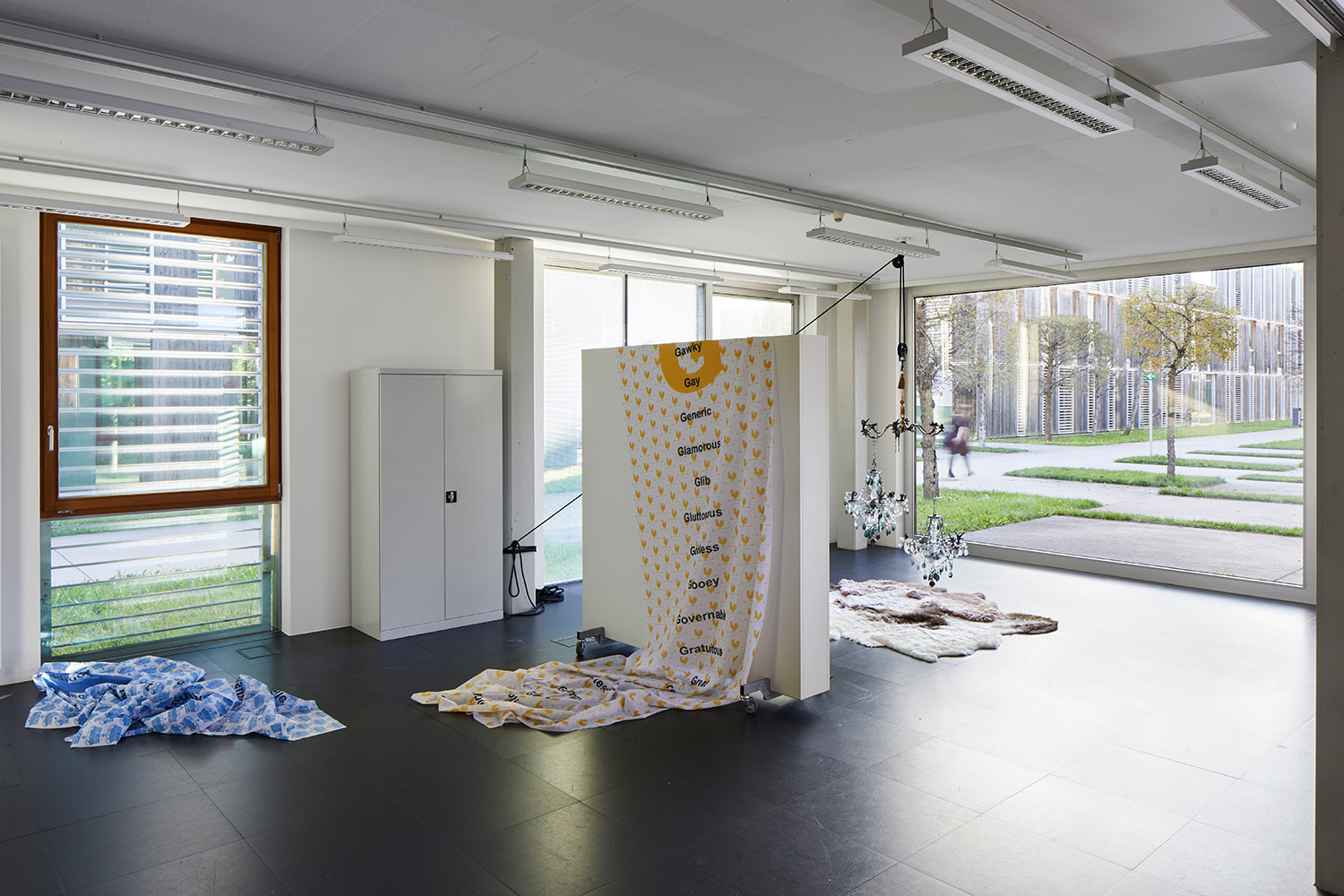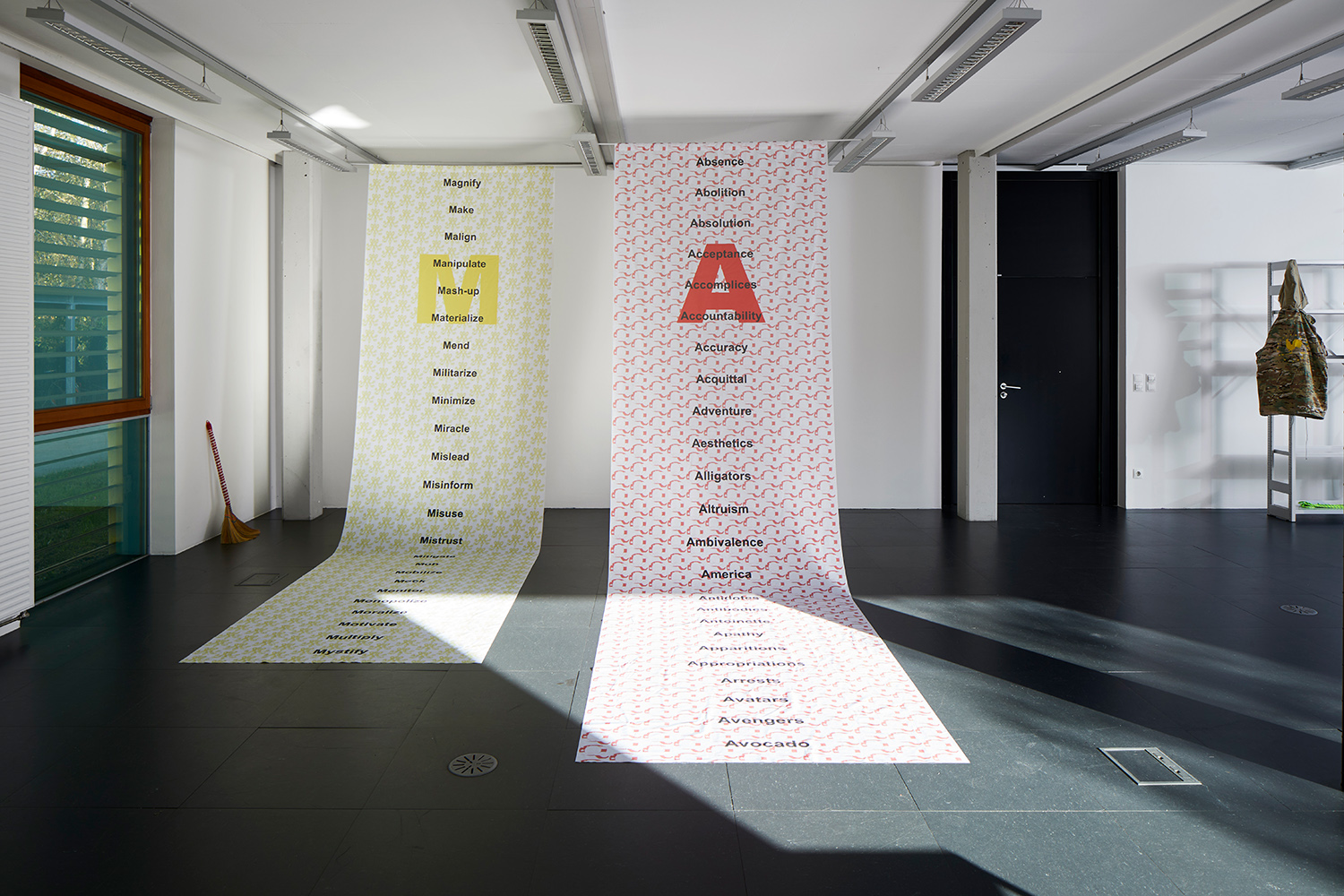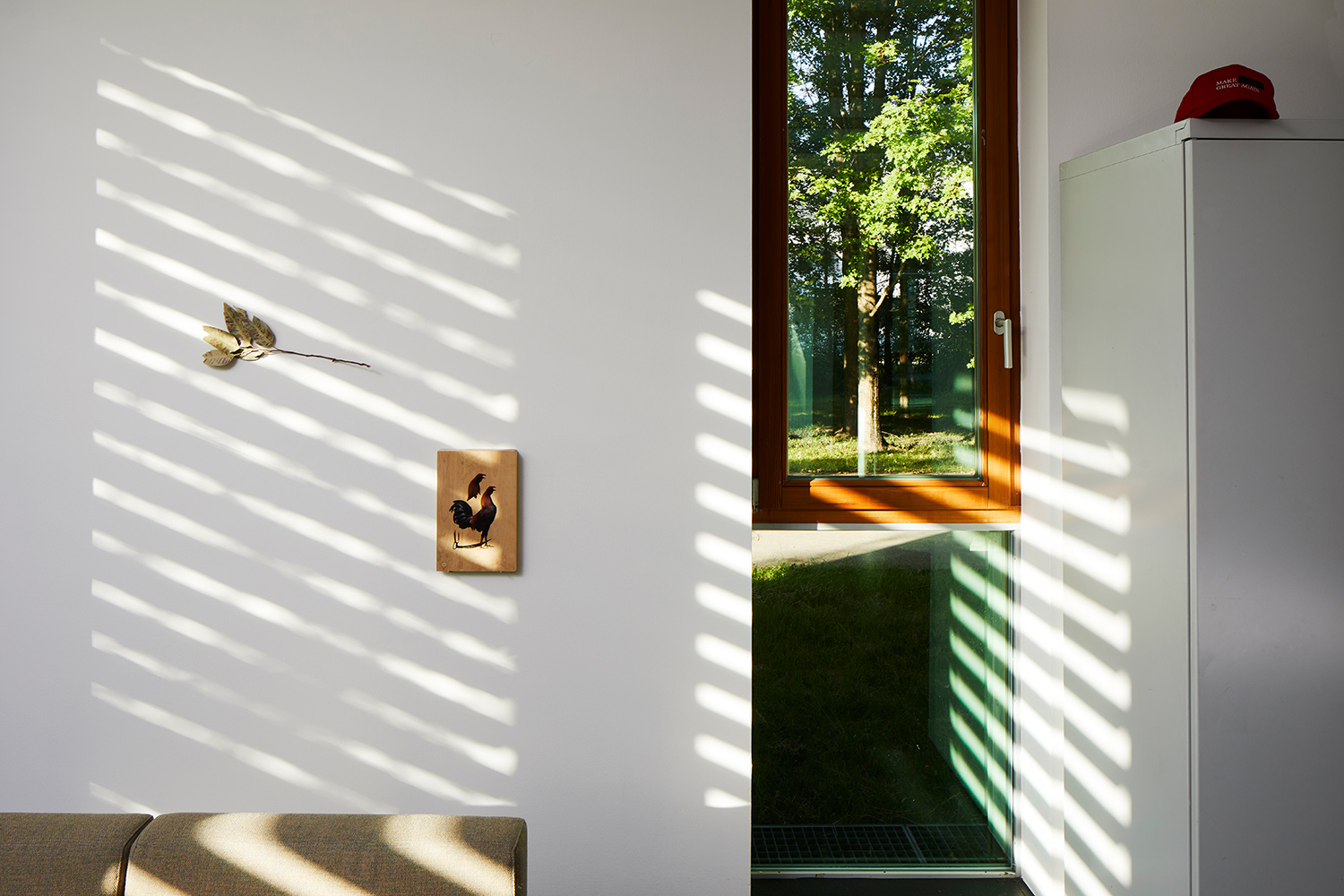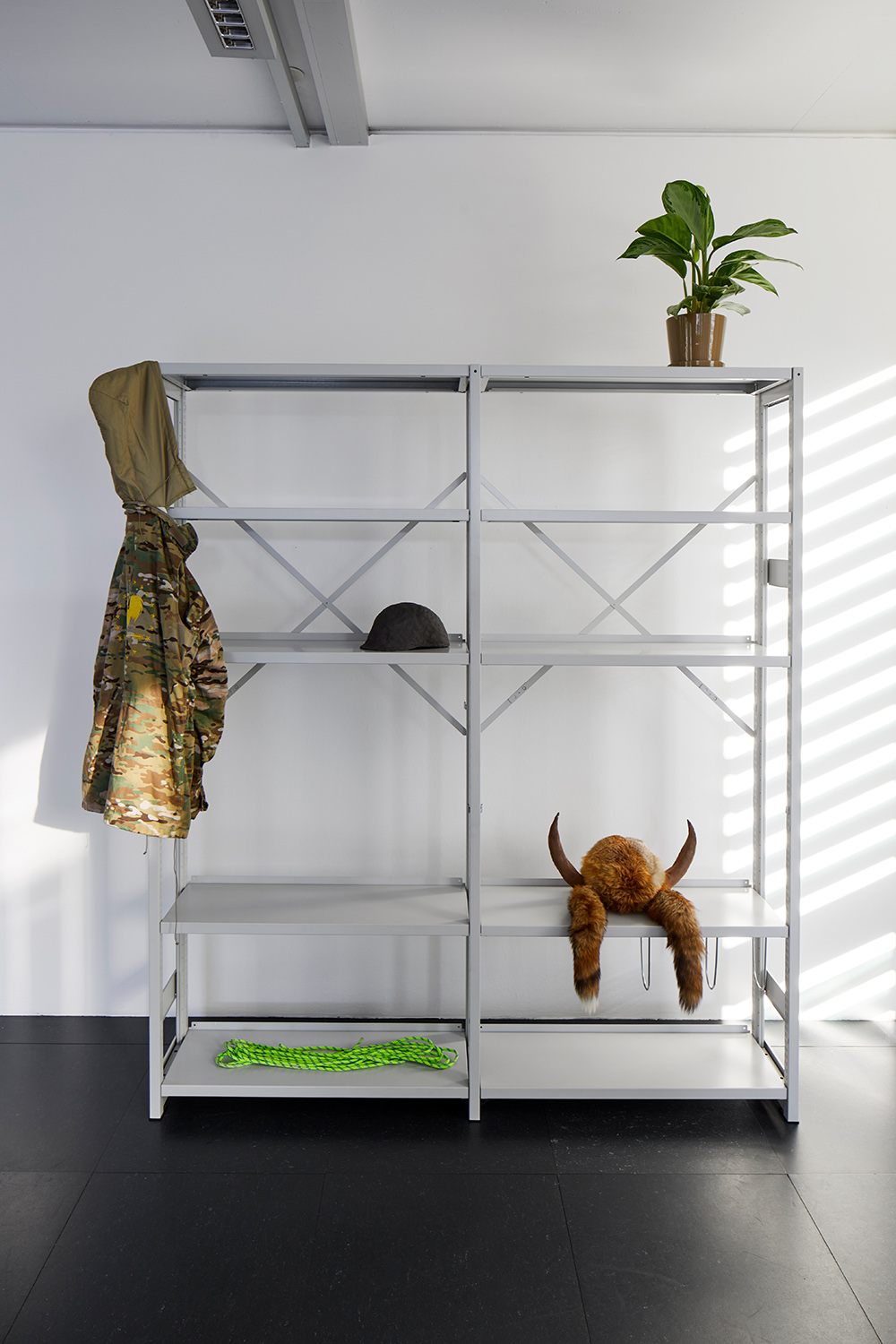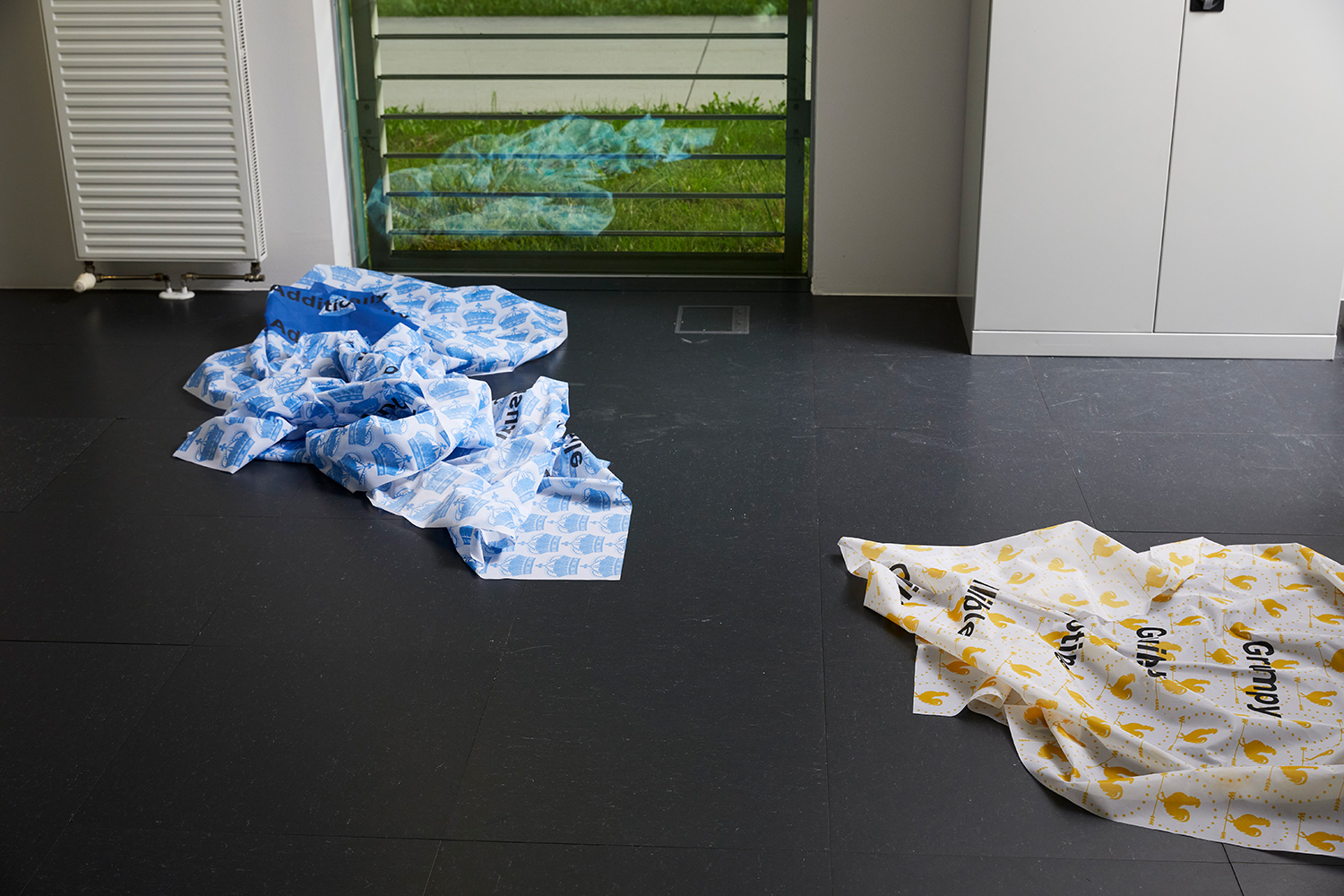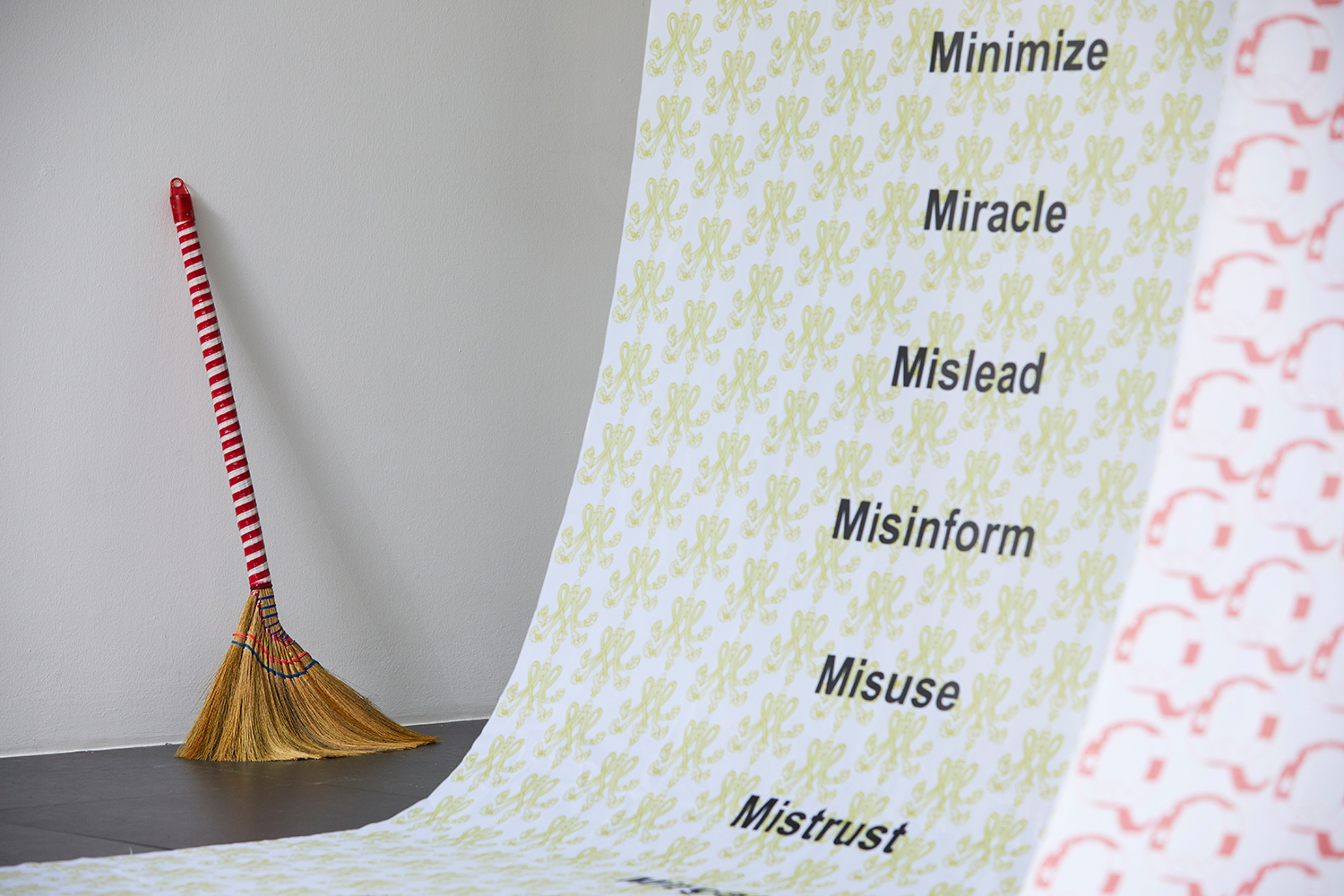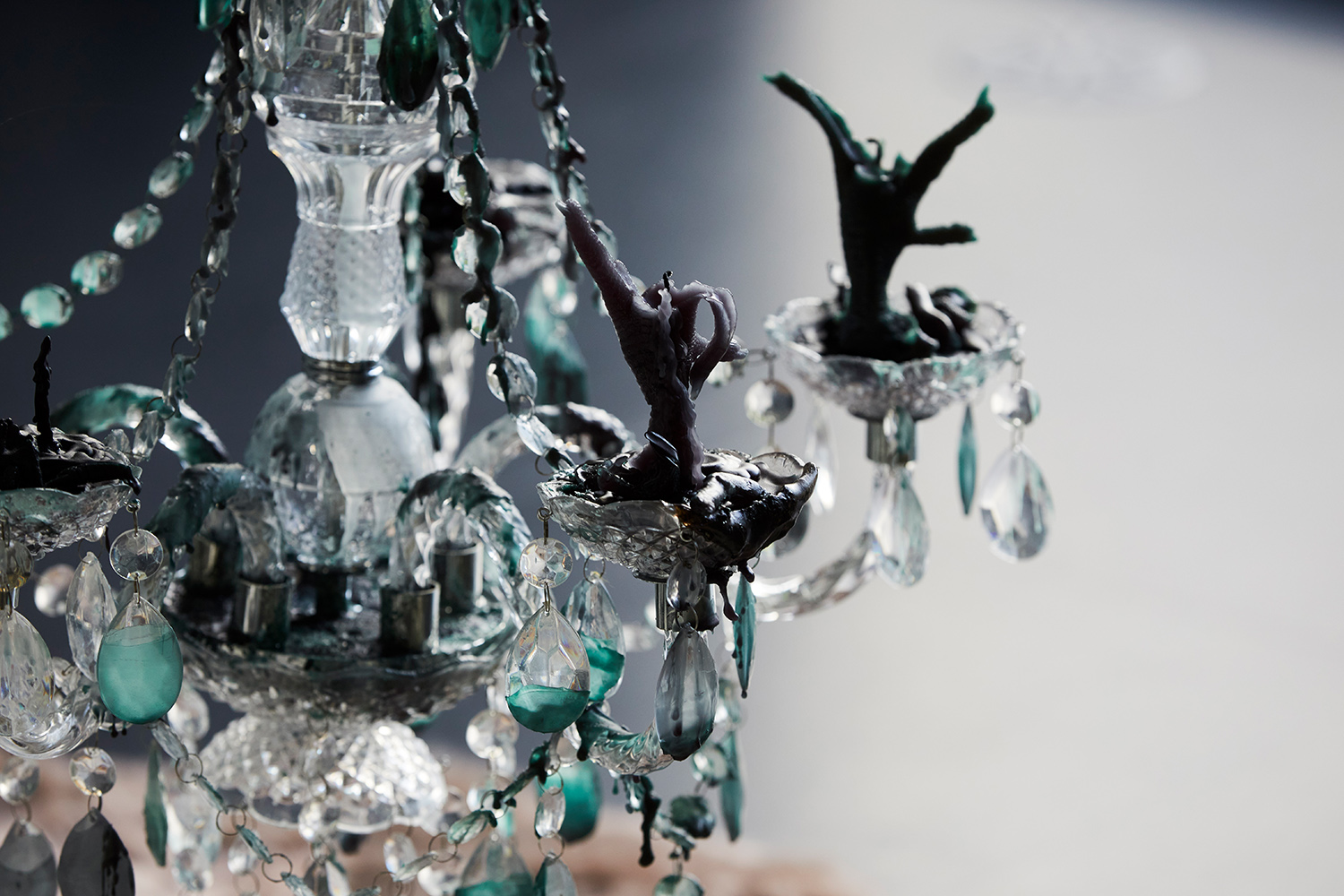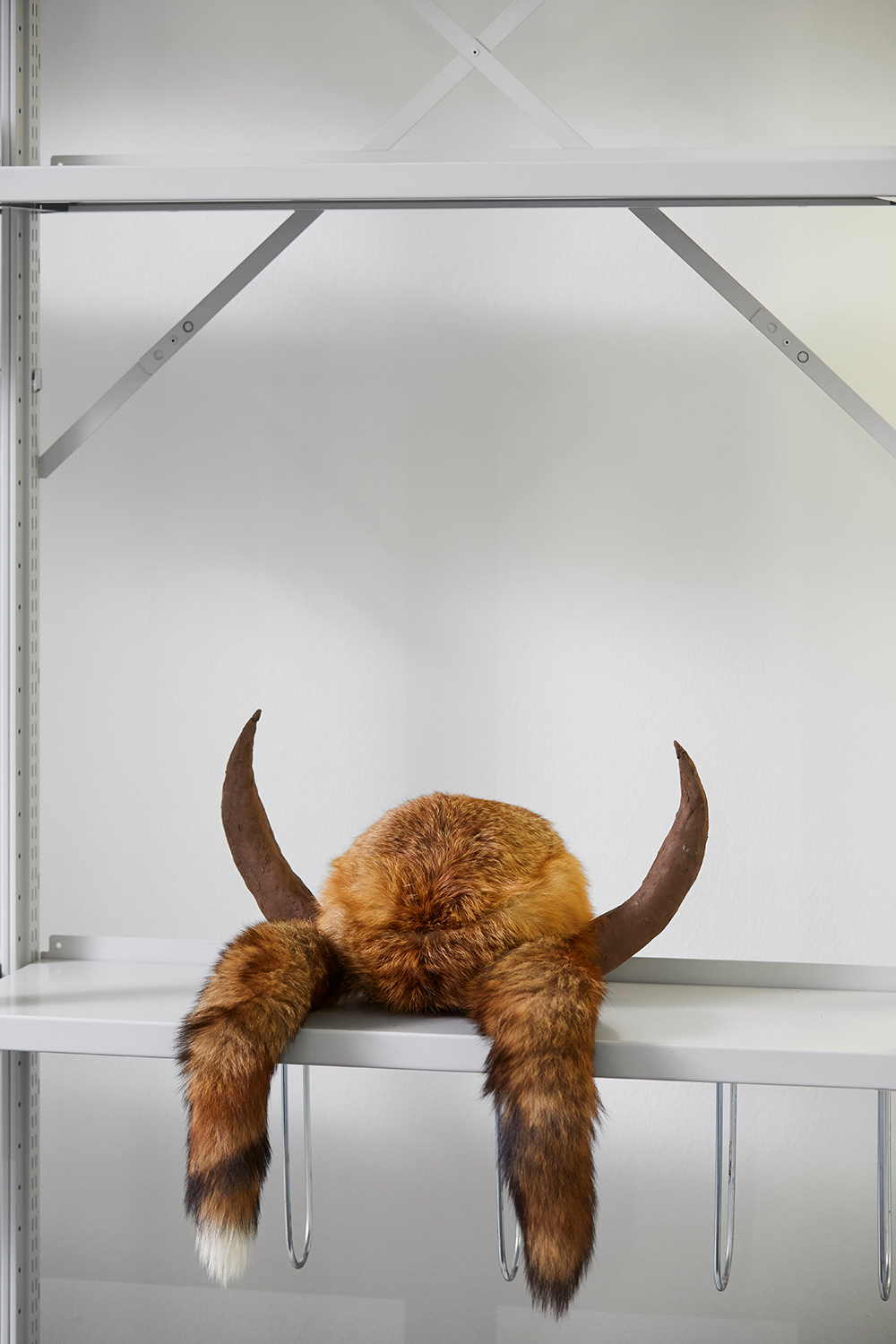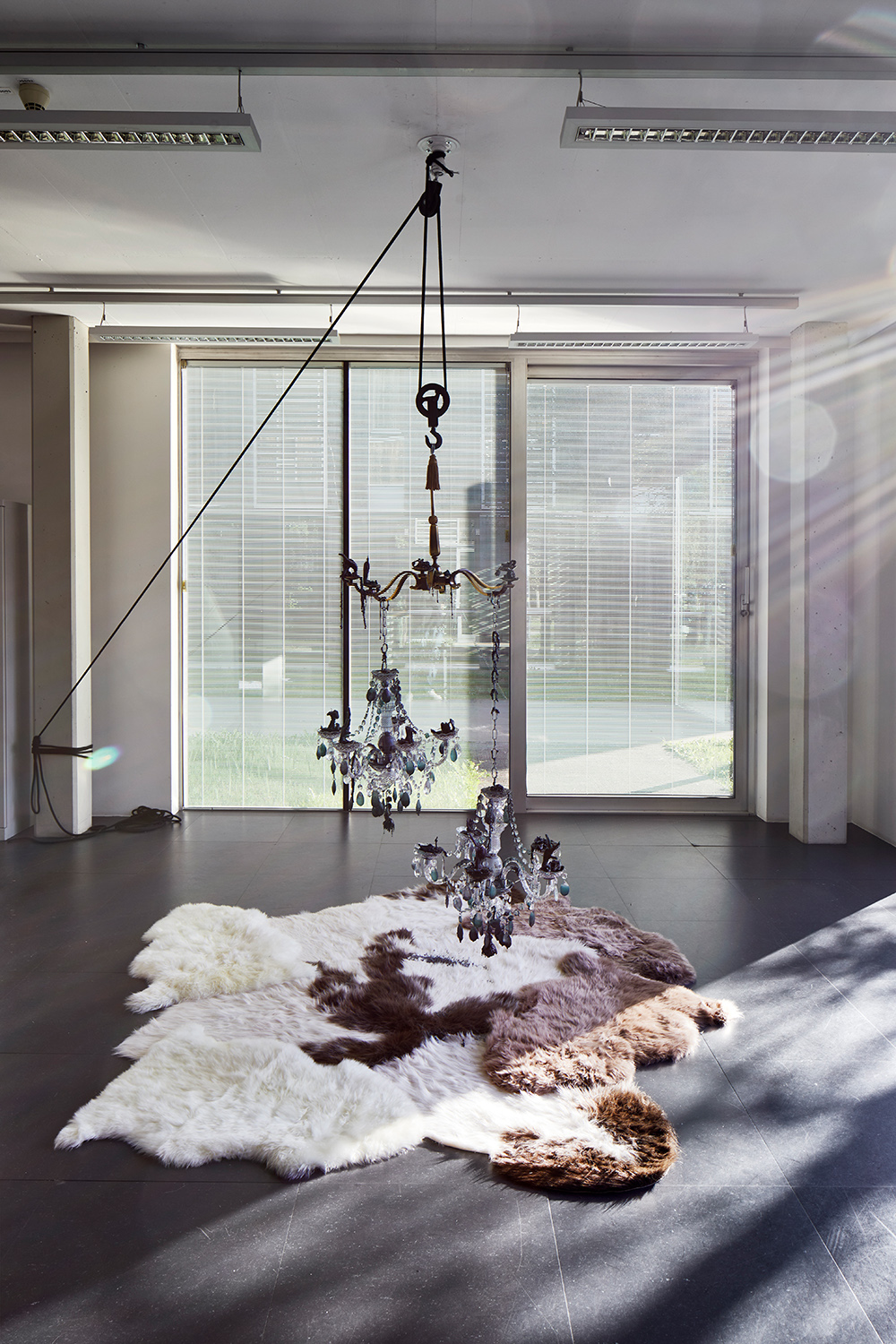Opening, October 3, 2023, 7 pm
Exhibition, October 4 – November 10, 2023
Two words that almost sound the same but have a single different vowel: Hallow Hollow reads the title of the exhibition by Stephanie Misa in Kunstraum Lakeside. The verb “hallow”—to venerate, honor as sacred, or to sanctify—is juxtaposed with “hollow”—empty, having a space or cavity inside—without any grammatical and sequential reference or an ostensible meaningful connection. The similarity of the words, however, invites us to ponder whatever might connect them. With the conjunction of two seemingly discrete units, the title alludes to a spatial contiguity that informs the entire exhibition: in the Kunstraum, Misa presents individual, stand-alone elements side-by-side, like in an encyclopedia, and leaves it up to the viewer to draw the connections between them.
Stephanie Misa looks back at the past in two ways: on the one hand, at the storming of the Capitol Building in Washington, D.C. on January 6, 2021—the attack on the joint session of the United States Congress by supporters of Donald Trump, who was still acting president at the time but had already been voted out of office—and, on the other, at her own preoccupation with this event in an exhibition in Vienna in 2021. Combining previous works with new elements, the artist explores how the discourse on the Capitol attack has changed nearly three and a half years after the incident and her initial artistic engagement.
On display are set pieces from an event that is both real and a mass media spectacle, including items of clothing, a chandelier, a carpet, and four large banners with alphabetically ordered words beginning with the letters A, M, and G. Like props in a repository, headwear awaits use or to play a role: for example, the red cap that has been a symbol for marketing Donald Trump’s vision of “Make America Great Again” since 2016; the coyote fur hat with bison horns that Jacob Chansley donned in 2019/2020 to stage himself on social media as a QAnon shaman; or the helmet that Kene Brian Lazo wore inside United States Congress on January 6. The latter an American of Filipino descent combined this helmet with a flag worn like a cape, ski goggles, and a traditional Filipino broom to go incognito in the unsuccessful coup attempt, but also to underline his beliefs in social media appearances.
The chandelier, candles, and carpet have less of a direct connection to the storming of the Washington landmark. Rather, they echo notions of Western luxury, syncretic voodoo practices, or a traditional poor-people meal. Misa calls this installation from 2021 The Séance, which couples times and places that have little to do with one another at first glance. The same applies to the words on the banners that, apart from their first letter, hardly reveal anything that connects them. And perhaps it is precisely this lack of coherence that makes it possible to understand events like the Capitol attack, if not fully, then at least to grasp some of their facets. After all, what we are dealing with here is a phenomenon in Western democracies, when people with seemingly disparate interests unite—such as a billionaire and down-trodden Americans, the Proud Boys as far-right, male-only proponents of white supremacy and their former (and newly incarcerated) black leader Enrique Tario, or the numerous men who yearn for a USA in a world that never existed, and marginalized immigrants who also share this dream. Like Misa’s choice of elements—objects as well as words—are vague connections that summon us to draw a relationship between them.
“Maybe the artist’s role is to dismantle and dissect things, events, people, and even places so we can see things a bit more clearly—so when things are sexist, misogynist, racist, colonial, xenophobic, unjust and undignified, we have the ability to call foul and ask for culpability, or at least see it for what it really is and respond accordingly,” says Stephanie Misa.* She formulates her investigations into identity, immigration, and historical and cultural ‘authenticity’ in videos, sculptures, printmaking, photography, and text production. Her own diasporic experiences as a woman of color serve as a backdrop to reflect on issues such as cultural hybridity, economic systems and co-dependencies, patriarchal structures and their imperialist agenda, the notion of “multiracial whiteness” and social media, identitarian movements, or, more generally, our society in times of crisis.
The artist is convinced “that a lot what goes on (in the everyday) is completely laughable (dangerous and scary too) but almost as if we were living in a parody of ‘real life’—it makes you think, no way can this be happening! I guess the times we are living through now also contributes to this ‘Alice Through the Looking Glass’ effect of the everyday or makes the silly things a lot more noticeable.”* And when even members of a majority society consider the world as an absurd performance, she replies: “Imagine how much more ridiculous the world looks to a non-white immigrant woman. We have so much more to comment on, and so much more at stake.”*
Precisely because so much is at stake, and even personal matters such as one’s own values, convictions, and emotions are subject to a constant loop of remediation, it is essential to pause, take another look, and then to notice, for example, that the helmet on display is made of ceramic and the “America” on the cap has been redacted. These are not the “original” objects of political action, rather they are references, perhaps representatives in the contemporary struggle for the interpretation of the world, which—as the storming of the Capitol has shown—is being played out in social media, the official mass media, and in real-life settings as well. It is about the direction to be taken by a divided society and its devoid political system. The insignia and words that decorate this process will continue to change. The hollow ground remains.
* Stephanie Misa in conversation with Paula Marschalek. See “Interview with Stephanie Misa,” www.les-nouveaux-riches.com/interview-with-stephanie-misa.
Stephanie Misa (b. 1979 in the Philippines) lives and works in Vienna and Helsinki.
www.stephaniemisa.com
